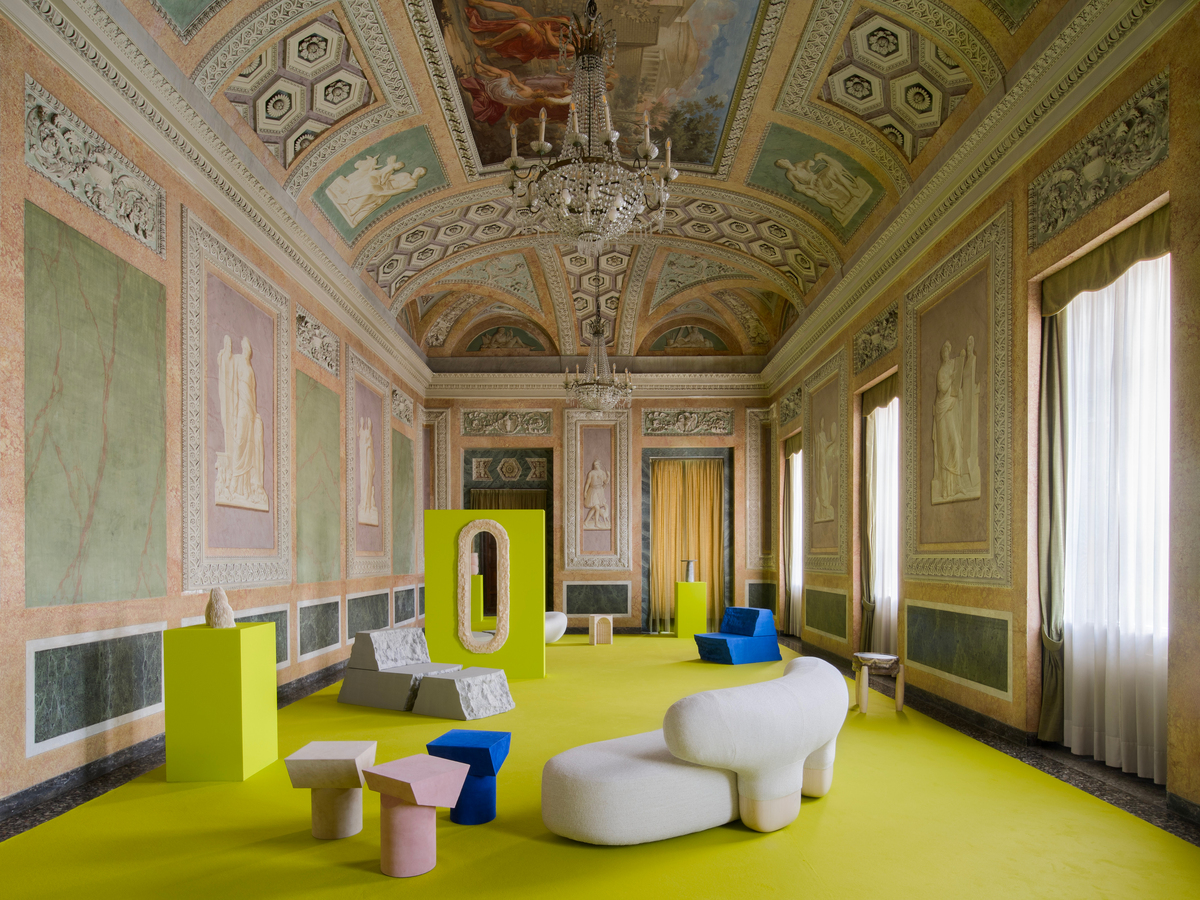The emerging collectible design gallery Movimento on the occasion of Lake Como Design Festival presents a selection of 11 designers that redefine the colors and aesthetic of the ‘Sala della Musica’ at Villa Olmo where the exhibition “The Blue Flower” is held.
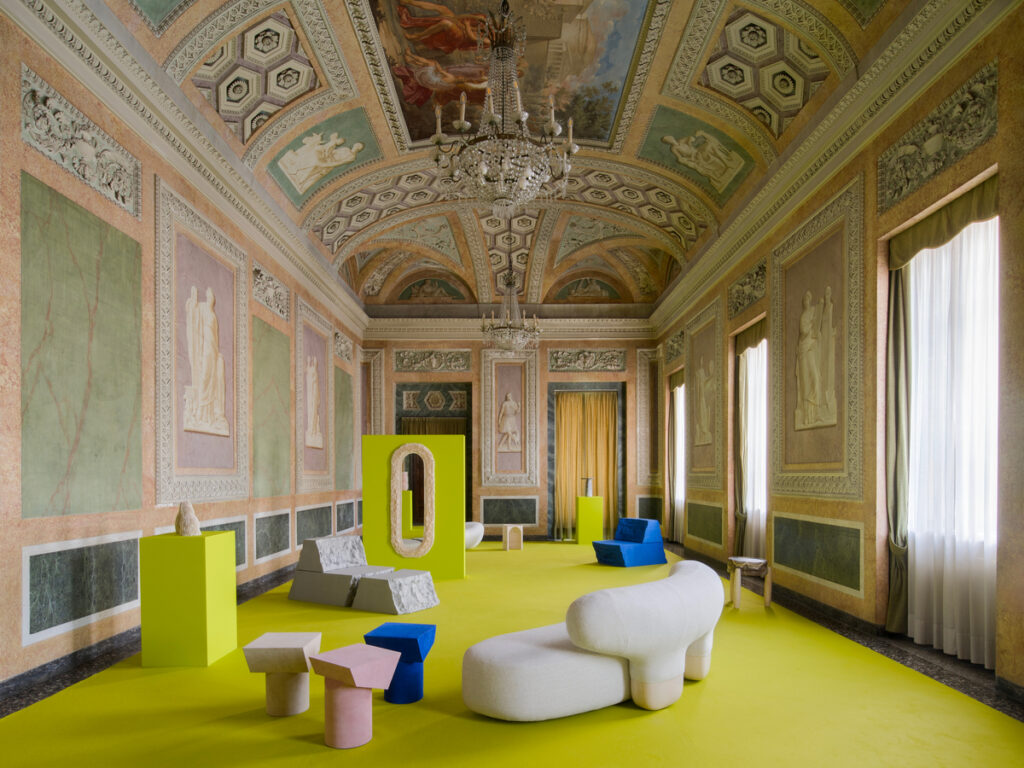
MOVIMENTO is a nomadic gallery representing emerging designers and artists from different parts of the world. The artworks are on view on the gallery's website and during events hosted by the gallery (i.e. Merging and Emerging in Porta Venezia during Milano Design Week 2023) and design exhibitions or fairs. Virtually, MOVIMENTO is a place where design enthusiasts, collectors, architects, interior designers, and the general public can discover and purchase some of the best designs from around the world. Movimento is a project curated by Artefatto Design Studio.
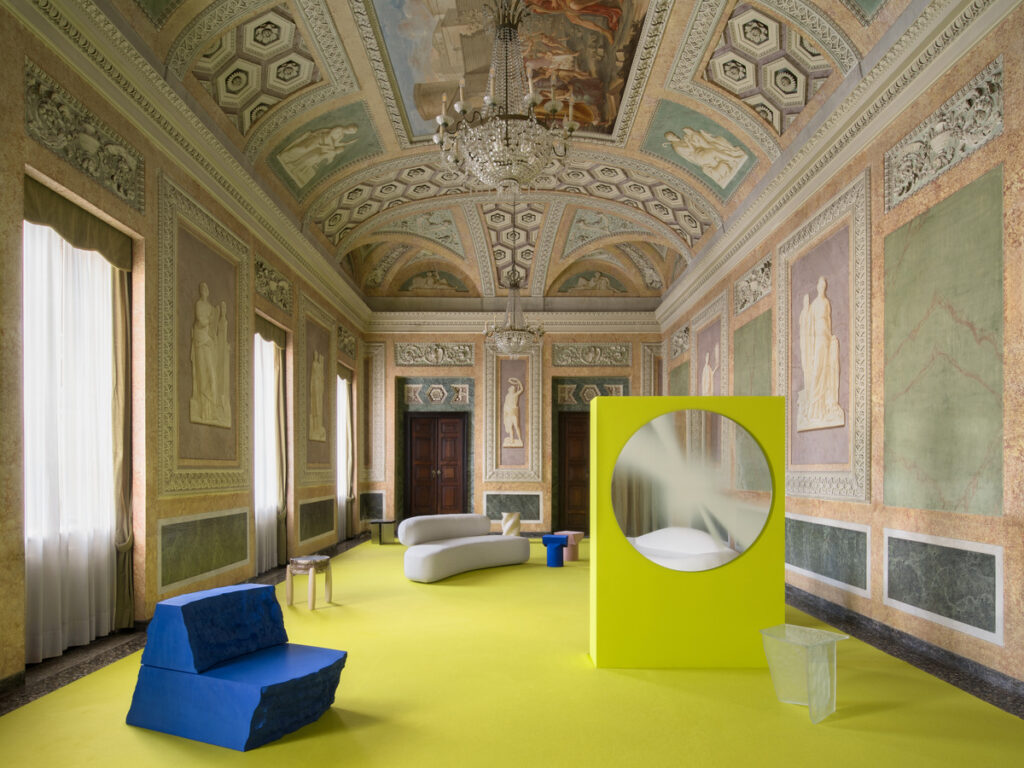
The festival brings to life events, talks, and exhibitions that take place in historical, little-known or forgotten locations. For the first time, the Villa Olmo historic residence opens its doors to bring together designers, artists, publishers, and galleries of modern and contemporary design.
Movimento in the Sala Musica of Villa Olmo, with the project curated by Artefatto Design Studio, addresses the theme "Naturalis Historia", the leitmotif of the festival, a direct reference to the homonymous work by Pliny the Elder.
With "The Blue Flower", Movimento, takes inspiration from the father of the romanticism movement in literature Edmund Burke, and his essay on the beauty in nature. The exhibition explores unexpected ways to surprise the viewer & finds beauty in objects that deceive the eye.
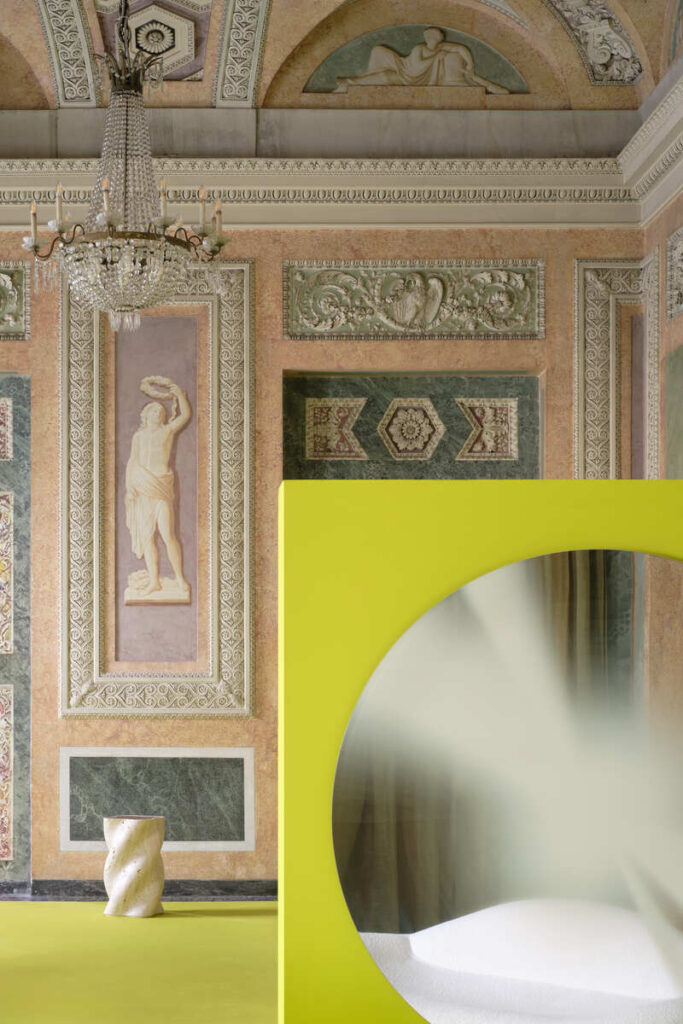
The blue flower is a much-used symbol in romantic literature. In a world where nature is mostly made up of various shades of the color green, the blue flower represents the rare, the unexpected, and the unique. This is how the 11 international designers with "The Blue Flower" have chosen to use their creations to explore and narrate new unconventional attitudes towards beauty.
As soon as you enter the room a sculptural Sofa by Italian furniture brand Secolo shows the viewer its back: round shapes made of solid wood and covered by light fabric. When Sofas are usually relatively insignificant on the back, this one is made to be seen and appreciated in 360°. Its beauty emanates a peaceful feeling.
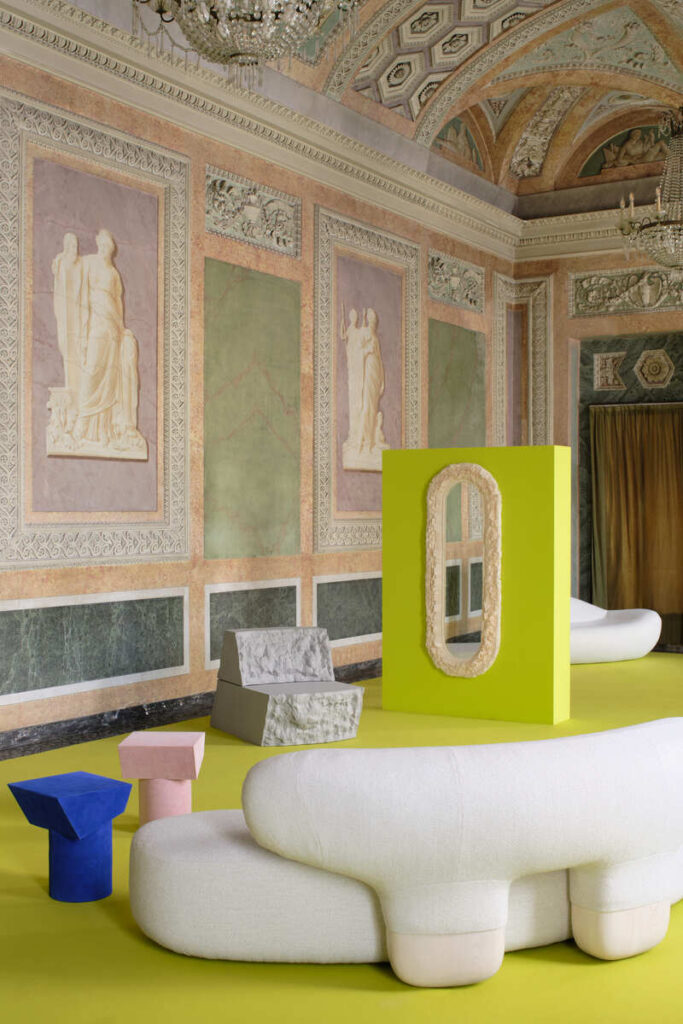
Walking through the installation two pieces surprise for their unexpected material. Two lounge chairs by German designer Pablo Octavio, which seem to be solid rock, leave the viewer astonished when they discover the chairs are actually made of soft foam. “Lapis Lazuli” is a soft, comfortable chair that has been carved by hand. As a result, every piece is different from the others in order to reach this seemingly rough stone appearance.
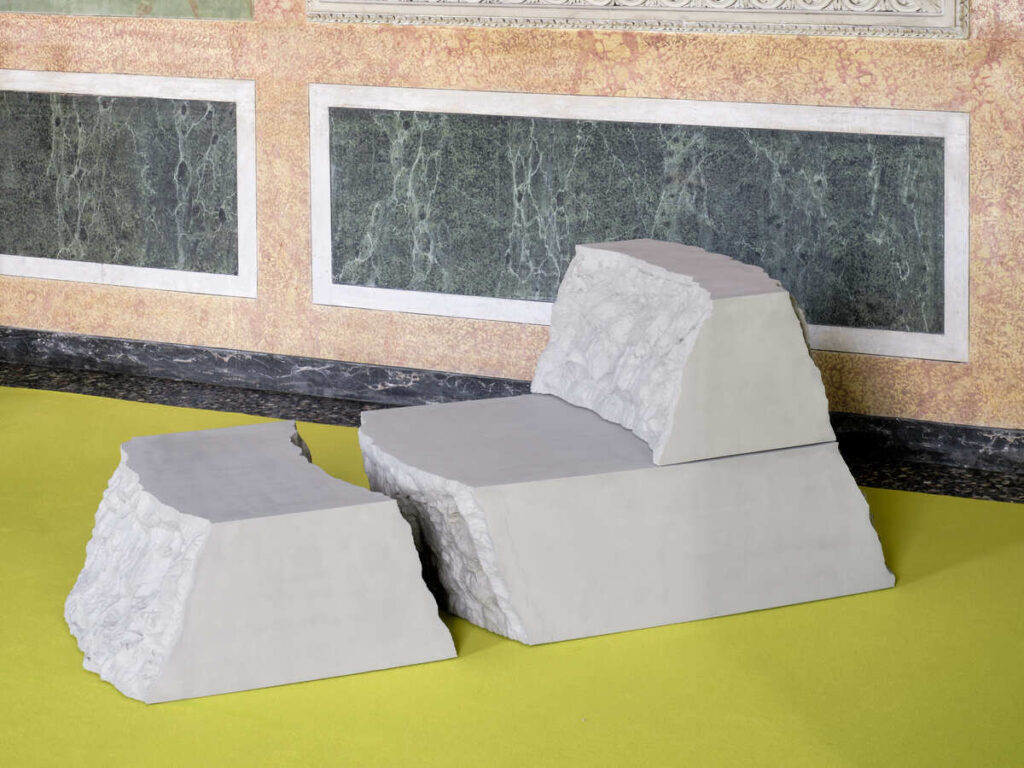
Lifting your gaze, a textile mirror appears — the “Oval Maxi Mirror” made by central-american design studio Caralarga. The mirror is part of the so-called “Repurposed” Collection, a series of decorative pieces made with cotton cuts recovered from textile objects. These cotton fibers can be brushed or messed up according to one’s mood of the day.
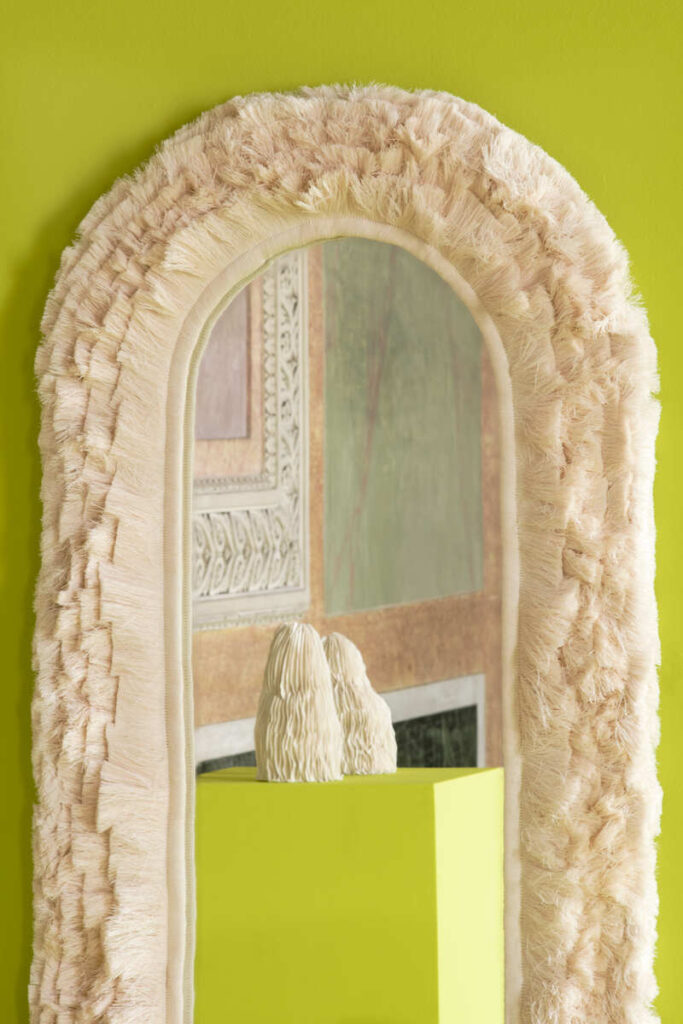
Ph Marcello Maranzan
Passing the mirror, a delicate 15mm optical glass side table hides itself by blending in with the lime-green moquettes. “ICED” glass table by architect and designer Heike Buchfelder is a sculptural expression of a moment of transition when water undulates between solid and liquid forms, floating on the surface of moving water.
The white optic glass slabs are sandblasted by hand. The result is a natural wave effect matte on the treated side and glossy on the other. The manual processing gives each table a unique surface structure and character, making each piece one-of-a-kind.
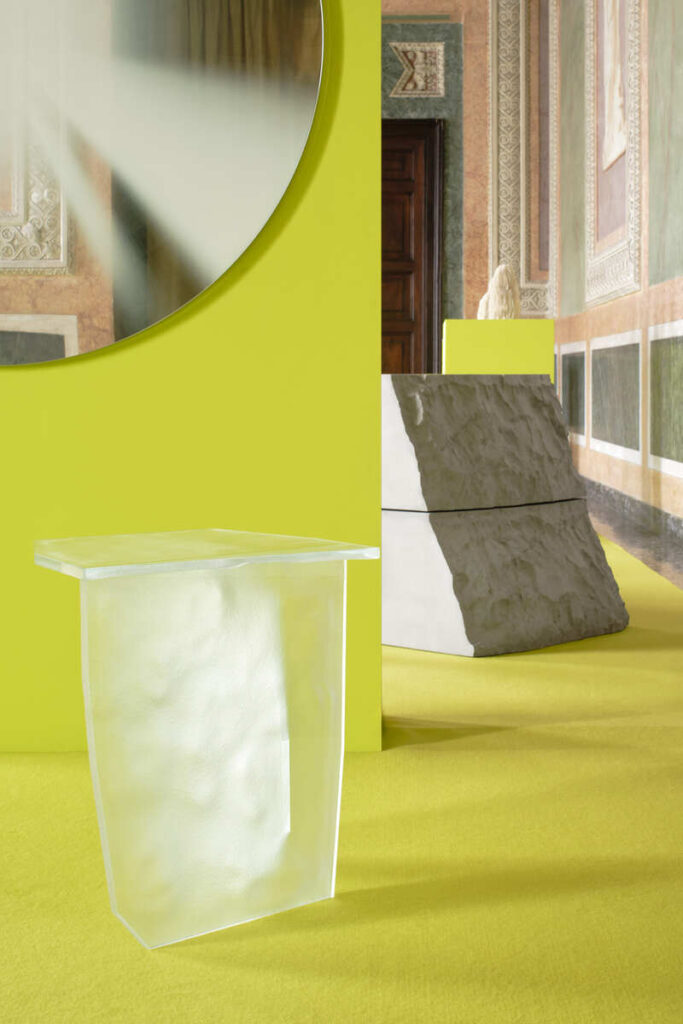
At the end of the room is an elegant side table, by Taiwanese designer Anderson Hsu, which stands out for its architectural minimalism. “Revelo” plays with arches and the calming quality of repetitive elements. The geometries are translated and inverted into texture and negative space. The small travertine sculpture seems to mock the famous Roman building “Palazzo della Civiltà Italiana”, a square colosseum built in 1940 and completed after the second world war, placed in the heart of an area in Rome called “EUR”. The building looks like a rational Colosseum and is now a symbol of that district of Rome.
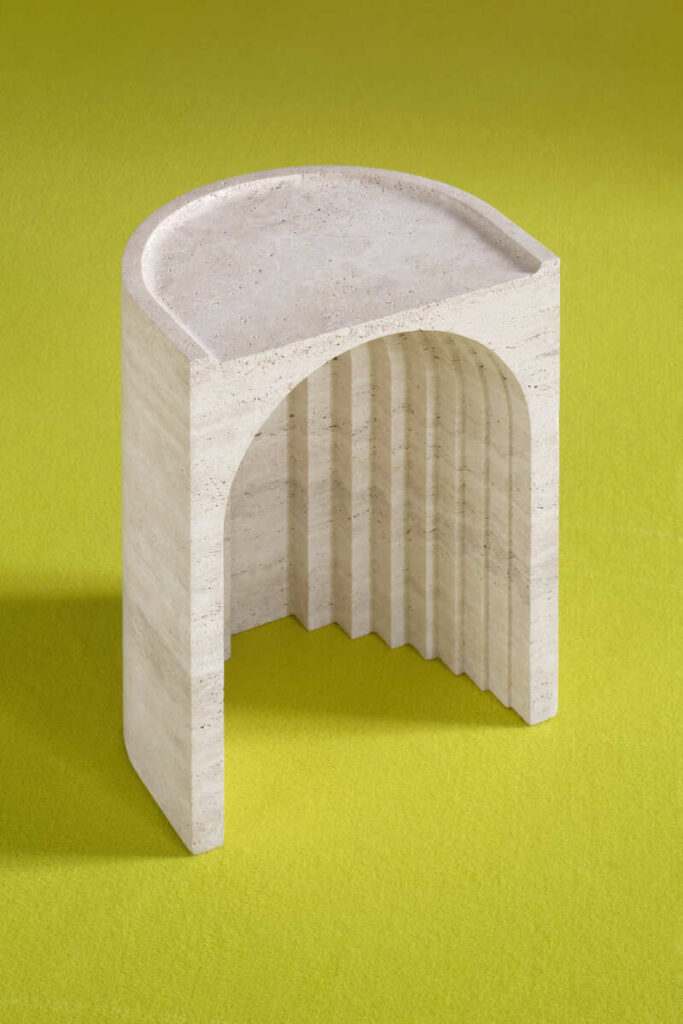
The exhibition captures the equilibrium of pastel colors placed on an acid green that pretends to be more aggressive than it actually is. The outcome is an elegant space where a contemporary vision gives a sparkling twist to the neoclassical decorated room of Villa Olmo.
